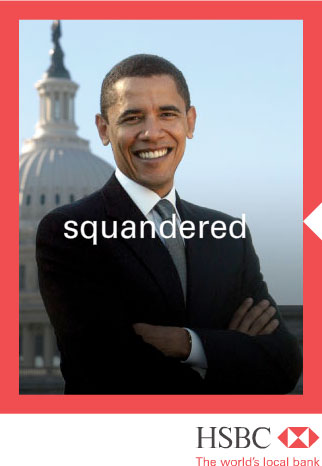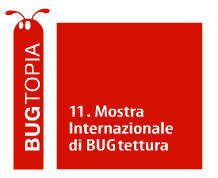Posted in Uncategorized on November 16th, 2008 No Comments »

Mit Autos das Klima ruinieren ist nicht gut. Dem kann jeder nur zustimmen. Fette Karren mit gut PS unter der Haube sind trotzdem sexy. Diesen Widerspruch nährt die Autoindustrie, weil Sie an den geilen großen und schnellen Wägen mehr verdient, als an den kleinen und vernünftigen. Sie möchte den Widerspruch auflösen, indem sie versucht sich ein grünes Image zu verpassen. Letzteres kann man im Artikel über den Pariser Autosalon im Handelsblatt feststellen, der wohl selbst Teil der grünen PR ist. Der Lügendetektor des Greenpeace-Magazines enttarnt die Grün-Image-Propaganda. Inwieweit die Praxis der Autokonzerne ihrem anvisierten Öko-Image widerspricht lässt sich auch in der Studie “Greenwash in Zeiten des Klimawandels” (PDF) von Ulrich Müller (lobbycontrol) nachlesen.

Autos sind noch immer wichtiges Symbol für Status, Distinktion und Life-Style. Dahinter steht nicht nur die Macht einer Kultur, sondern eine mächtige Industrie die diese Kultur geprägt hat und alles dafür tut, daß das Auto nicht nur als Fortbewegungsmittel gesehen wird, sondern als Kultmittel. Mit daran hängen mehrere Branchen mit unzähligen kleineren und größeren Unternehmen, die mit allen Mitteln versuchen die aktuelle Popularität von “Öko” mit den “Images vom Automobil” in Einklang zu bringen, was meist nicht ohne unüberbrückbare Widersprüche funktioniert (vgl. Verkehrte Welt 1: Vollgas Öko).

Posted in Uncategorized on November 13th, 2008 No Comments »
Nachtrag (14.11.08):
Die Aktion zieht Kreise, u.a. heute, 14.11., in der SZ (bereits am 12.11. online).
Man kann gespannt sein inwieweit die Aktion die öffentliche Wahrnehmung und Diskussion der implizit und explizit angesprochenen Themen beeinflussen kann. Aufmerksamkeit generiert sie auf jeden Fall schon mal. Dies mal steht aber nicht im Vordergund einen “Fake” glaubhaft zu inszenieren, der durch seine Übertreibungen (subversive Affirmation) oder durch seine Rätselhaftigkeit Irritationen der Wahrnehmung und in Folge Auseinandersetzungen erwirkt, die Images und andere Effekte strategischer Kommunikation dekonstruieren. Die Vorliegende Aktion besitzt wesentlich utopischere Züge: zum einen sind die fiktiven News “gute” Nachrichten. Sie führen die Möglichkeit einer gerechteren Welt vor. Zum anderen werden konkrete Hinweise gegeben, was heute dafür getan werden kann, um irgendwann dort hin zu komen, wo eine solche Ausgabe von der echten NY Times stammen könnte.
This special edition of The New York Times comes from a future in which we are accomplishing what we know today to be possible.
Im Gegensatz dazu stehen die fiktiven Anzeigen. Hier waltet der subversive Witz, der das Absurde oder Widersprüchliche im Normalen sichtbar macht (“Identity Correction“) und durch provozierende Übertreibungen ein Nachdenken darüber bewirkt, was mit der Normalität “nicht stimmt”.
—
Weil’s gar so schön ist gibt’s noch ein paar Ergänzungen zur traumhaften Ausgabe zur NY Times (s. Beitrag von Fred):
der Link zur Site der NY Times unserer Träume.

Ein bisschen Werbung (Flash)

Im Fineprint wird Flagge bekannt und Weiterführendes vermittelt. Unter Corrections wird einiges richtiggestellt. Und hier gibt’s Videos über die Aktion.
Posted in Uncategorized on November 13th, 2008 No Comments »
“All the news that’s fit to print” wird zu “All the news we hope to print”.
Es war eine so perfekte wie spektakuläre Parodie. Eine Aktivistengruppe hat eine gefälschte “New York Times” in Millionenauflage in US-Metropolen verteilt – mit Nachrichten aus einer Zukunft, von der sie träumen: Die Kriege sind vorbei, George W. Bush wird angeklagt, Condi Rice outet sich als Lügnerin.
Sie sah täuschend echt aus – nur was in der angeblichen Sonderausgabe der “New York Times” zu lesen war, ließ die Leser stutzen. Die Kriege im Irak und in Afghanistan seien beendet, das US-Gefangenenlager Guantanamo Bay auf Kuba geschlossen worden, George W. Bush werde wegen Hochverrats angeklagt, stand da zu lesen.
Link zum PDF
Weiterlesen
Posted in Uncategorized on November 12th, 2008 No Comments »
Die Jan van Eyck Academie ruft zur Teilnahme an einem interessanten Forschungsprojekt auf. Hierein Ausschnitt:
Extrastatecraft: Hidden Organizations, Spatial Contagions and Activism, a new project of the Design department, initiated by Keller Easterling, researches underexplored territory in the world’s infrastructural and organizational strata. The work focuses on shared protocols, managerial subroutines and financial instruments as they produce and program physical space around the world. Perhaps because these organizations operate in the background, in an active and relational rather than nominative register, their political outcomes are often at once pervasive and mysterious.
For instance, how do organizations like the ISO (International Organization for Standardization) or McKinsey determine management protocols? How do construction networks, more than the singular creations of architects and urbanists, disseminate materials and processes that determine how the world is calibrated? How do markets and financial instruments create templates that shape space?
The research also explores the political leverage latent in this renovated conception of global infrastructure. Some of the most radical changes to the globalizing world are being written, not in the language of law and diplomacy, but rather in the language of architecture, urbanism and infrastructure. Armand Mattelart argues that global infrastructure is a field that is ‘young and uncharted’ largely because it is often still considered in terms of national rather than international histories. Moreover, the political instrumentality of these increasingly familiar global spheres is still frequently theorized in terms of militarization or universal rationalization, when they might really be agents of more discrepant or obscure forms of polity. The notion that there is either a dominant logic or a proper forthright realm of political negotiation usually acts as the perfect camouflage for parallel political activity – the medium of subterfuge, hoax and hyperbole that actually rules the world.
…
Der Komplette Auschreibungstext ist auf der Site der Jan van Eyck Academie zu finden. Abgabetermin ist der 24.11.2008
Posted in Uncategorized on November 5th, 2008 No Comments »

BUGtopia aims to disrupt the elegant neutrality of the Biennale ambience, twisting the public attention from the masterpieces – incarnations of auto-referential rhetoric – to underline the vital aspects of the space and intervene in it with open eyes and creative hands. Throughout a playful pathway, every single visitor can make a contribution to “contaminate the Biennale”, in order to make it a new space to take possession of.
The contamination will take place throughout the various implementations of the “bug” concept: not only a defect or difficulty, but an organism, that spreads fortuitously in the urban fabric, giving place to unexpected phenomena.
As for every game there will be some rules to follow: every player will be given some materials (images, paper, felt-pens, cardboards, glue, scissors…) and she/he can choose to build up or to assemble (with the collage technique) some silhouettes, which represent cross sections of city life.
Leaving her/his bug inside the Biennale’s park, the player becomes the actor of the event and offers her/his personal, customized contribution. This is documented with pictures, put up on an inflatable implant (“Ciccio”) that is the creative workshop where everything begins.
In return, the player will be given a BUGpin, a distinguishing badge of her/his making the Venice Biennale a place closer to the effective social and public dimension of our cities.

(Das war das Ergebnis des Workshops “PUBLIC SPACE AND THE ECONOMY OF ATTENTION“, den ich am Master für “Digital Environments Design” der NABA gegeben habe. Schön, daß es möglich war etwas vollkommen analoges und high-tec-freies zu machen, was gleichzeitig interaktiv, sozial, kritisch, subversiv und nett ist !-) Mein Dank geht an die aktiven Studenten und an Paolo Atzori, der den Rahmen ermöglicht hat.)






